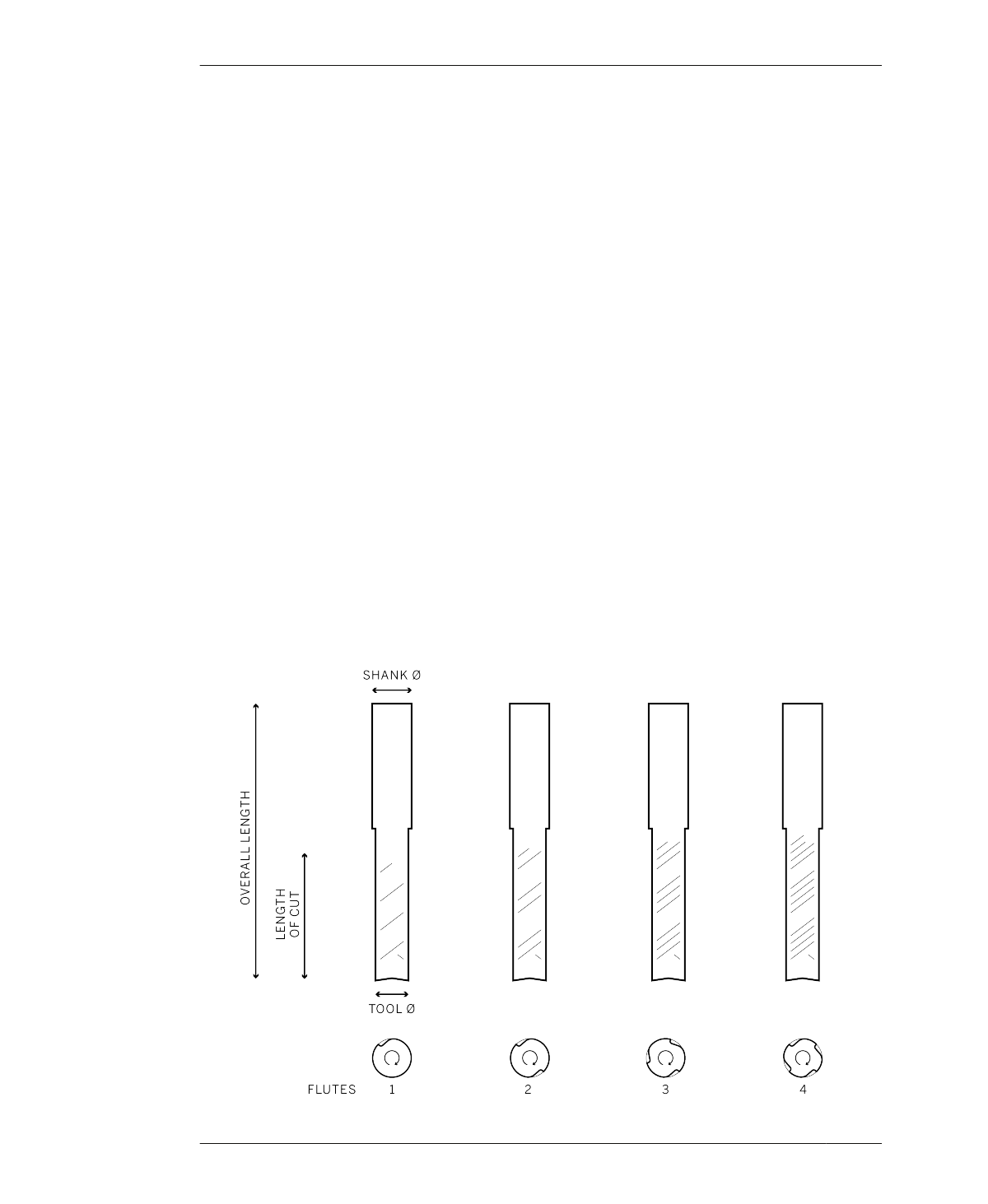
END-MILL ANATOMY
END-MILL ANATOMY
A router bit is a type of end mill. These terms
are more or less interchangeable, but there are
individual attributes that make a tool optimized
for cutting a specific material.
The term end mill has a milling/machinist ori-
gin, and mills existed long before there were
routers. Because routers and high-speed spin-
dles spin at dramatically higher RPM than tradi-
tional mill spindles, machinists created
modified end mills for routing wood without
burning it up and starting a fire. These mills
were capable of cutting at higher spindle
speeds, and were subsequently dubbed router
bits.
Fortunately, both end mills and router bits
share common anatomical features, so know-
ing their parts will help you focus on the fea-
tures that most impact your project.
Tool Materials
End mills come in a variety of materials. Tools
made of solid carbide are more expensive, but
yield the best finish, have the longest life, cut
quickly through material, and plunge well. Less
expensive carbide-tipped and high-speed steel
(HSS) tools tend not to perform as well and
prove to be less durable.
Flute
The radial or helical grooves machined into a
tool. Each flute has a sharp cutting edge (or
tooth) that cuts and then evacuates chips. End
mills with one, two, or three flutes are used in
woodworking, with two flutes being the most
common. Tools with four or more flutes are typ-
ically used to mill harder substances.
Shank
The plain region without flutes that is inserted
into the spindle. Shank diameters come in
standard sizes, the most common are: ¼″, ½″,
and 1⁄8″.
FIGURE 6-5
Key parts of an end mill
150
DESIGN FOR CNC
